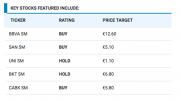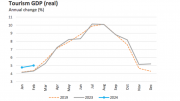Puig Brands (Carolina Herrera, Paco Rabanne, Jean Paul Gaultier…) to go public on May 3, with valuation over €12.7 billion
Puig Brands – the group that owns Carolina Herrera, Paco Rabanne, Jean Paul Gaultier, Nina Ricci and Charlotte Tilbury – will go public on 3 May at a price of between €22 and €24.5 per share. That means a valuation of between €12.7 and €13.9 billion. And although it has not yet approved a shareholder remuneration policy, it says it expects to pay out 40% of its profits in dividends….
Read More









